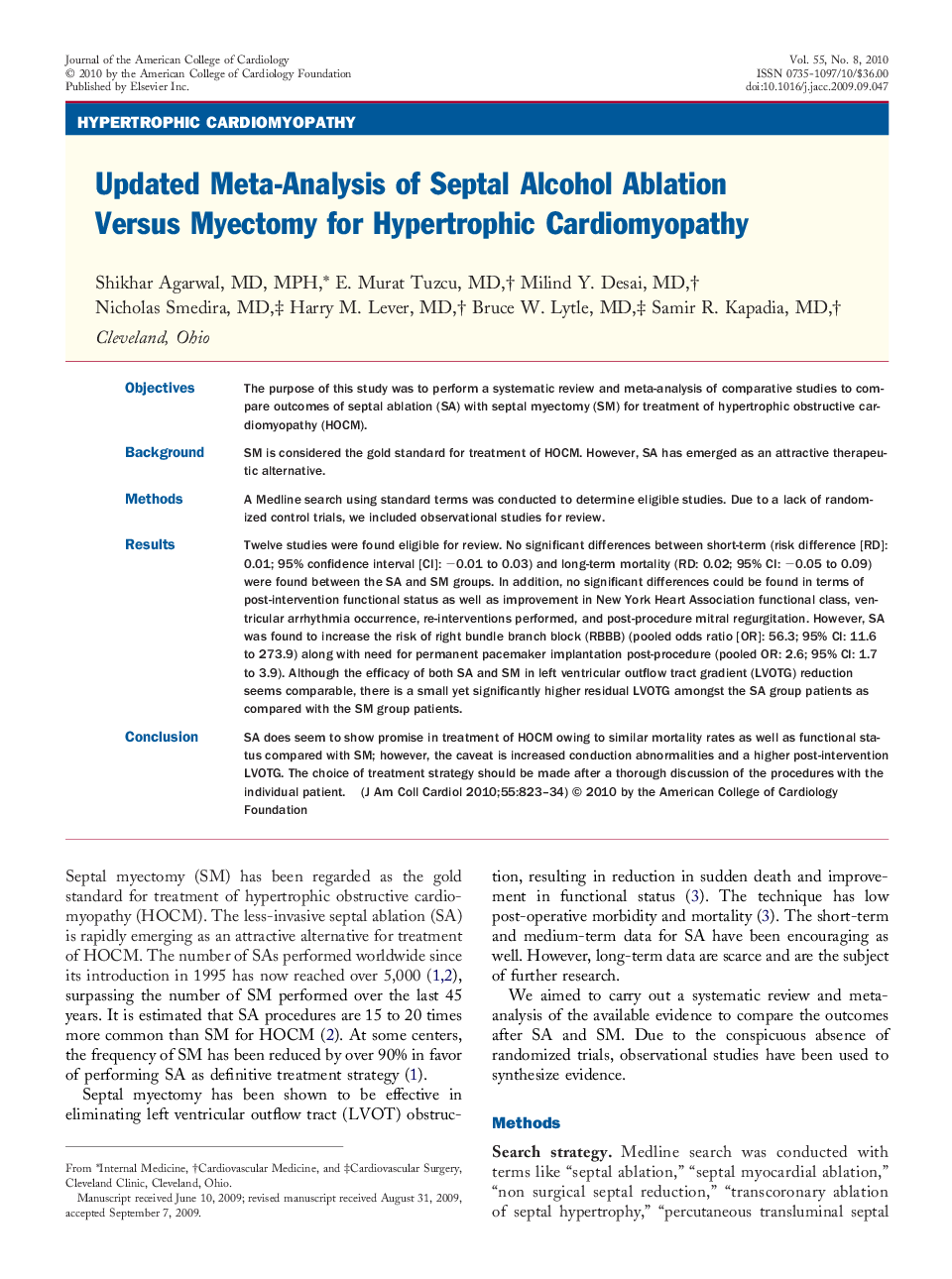| Article ID | Journal | Published Year | Pages | File Type |
|---|---|---|---|---|
| 2950138 | Journal of the American College of Cardiology | 2010 | 12 Pages |
ObjectivesThe purpose of this study was to perform a systematic review and meta-analysis of comparative studies to compare outcomes of septal ablation (SA) with septal myectomy (SM) for treatment of hypertrophic obstructive cardiomyopathy (HOCM).BackgroundSM is considered the gold standard for treatment of HOCM. However, SA has emerged as an attractive therapeutic alternative.MethodsA Medline search using standard terms was conducted to determine eligible studies. Due to a lack of randomized control trials, we included observational studies for review.ResultsTwelve studies were found eligible for review. No significant differences between short-term (risk difference [RD]: 0.01; 95% confidence interval [CI]: −0.01 to 0.03) and long-term mortality (RD: 0.02; 95% CI: −0.05 to 0.09) were found between the SA and SM groups. In addition, no significant differences could be found in terms of post-intervention functional status as well as improvement in New York Heart Association functional class, ventricular arrhythmia occurrence, re-interventions performed, and post-procedure mitral regurgitation. However, SA was found to increase the risk of right bundle branch block (RBBB) (pooled odds ratio [OR]: 56.3; 95% CI: 11.6 to 273.9) along with need for permanent pacemaker implantation post-procedure (pooled OR: 2.6; 95% CI: 1.7 to 3.9). Although the efficacy of both SA and SM in left ventricular outflow tract gradient (LVOTG) reduction seems comparable, there is a small yet significantly higher residual LVOTG amongst the SA group patients as compared with the SM group patients.ConclusionSA does seem to show promise in treatment of HOCM owing to similar mortality rates as well as functional status compared with SM; however, the caveat is increased conduction abnormalities and a higher post-intervention LVOTG. The choice of treatment strategy should be made after a thorough discussion of the procedures with the individual patient.
